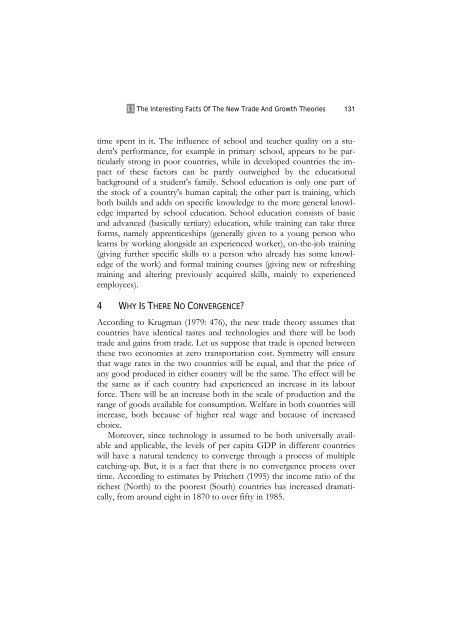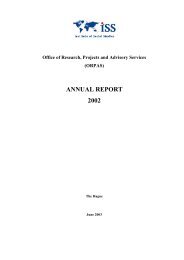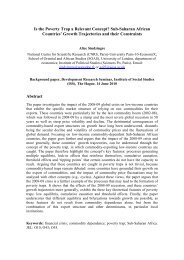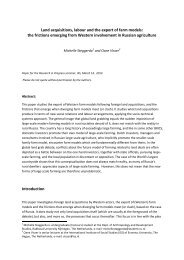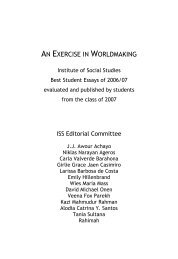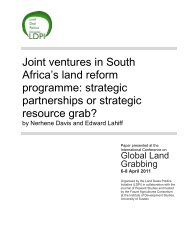AN EXERCISE IN WORLDMAKING 2009 - ISS
AN EXERCISE IN WORLDMAKING 2009 - ISS
AN EXERCISE IN WORLDMAKING 2009 - ISS
Create successful ePaper yourself
Turn your PDF publications into a flip-book with our unique Google optimized e-Paper software.
11 The Interesting Facts Of The New Trade And Growth Theories 131<br />
time spent in it. The influence of school and teacher quality on a student's<br />
performance, for example in primary school, appears to be particularly<br />
strong in poor countries, while in developed countries the impact<br />
of these factors can be partly outweighed by the educational<br />
background of a student's family. School education is only one part of<br />
the stock of a country's human capital; the other part is training, which<br />
both builds and adds on specific knowledge to the more general knowledge<br />
imparted by school education. School education consists of basic<br />
and advanced (basically tertiary) education, while training can take three<br />
forms, namely apprenticeships (generally given to a young person who<br />
learns by working alongside an experienced worker), on-the-job training<br />
(giving further specific skills to a person who already has some knowledge<br />
of the work) and formal training courses (giving new or refreshing<br />
training and altering previously acquired skills, mainly to experienced<br />
employees).<br />
4 WHY IS THERE NO CONVERGENCE?<br />
According to Krugman (1979: 476), the new trade theory assumes that<br />
countries have identical tastes and technologies and there will be both<br />
trade and gains from trade. Let us suppose that trade is opened between<br />
these two economies at zero transportation cost. Symmetry will ensure<br />
that wage rates in the two countries will be equal, and that the price of<br />
any good produced in either country will be the same. The effect will be<br />
the same as if each country had experienced an increase in its labour<br />
force. There will be an increase both in the scale of production and the<br />
range of goods available for consumption. Welfare in both countries will<br />
increase, both because of higher real wage and because of increased<br />
choice.<br />
Moreover, since technology is assumed to be both universally available<br />
and applicable, the levels of per capita GDP in different countries<br />
will have a natural tendency to converge through a process of multiple<br />
catching-up. But, it is a fact that there is no convergence process over<br />
time. According to estimates by Pritchett (1995) the income ratio of the<br />
richest (North) to the poorest (South) countries has increased dramatically,<br />
from around eight in 1870 to over fifty in 1985.


